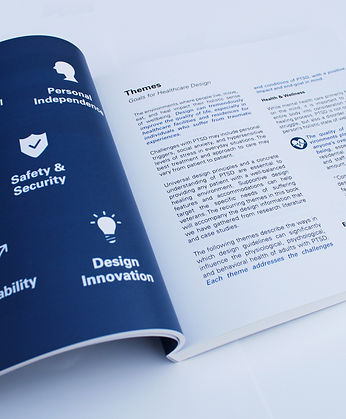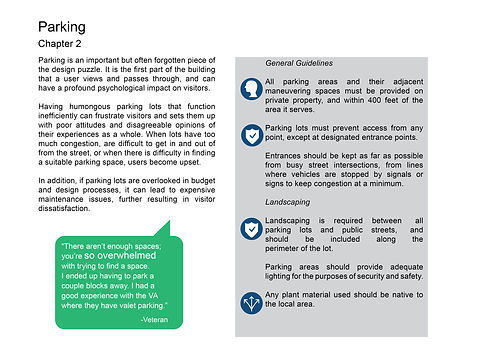

KAILEY GRIFFIN

What is PTSD?
Posttraumatic Stress Disorder (PTSD) develops after an expertience of trauma, such as combat, physical or sexual assault, terrorist attack, serious accident, or natural disaster. This event then results in feelings of intense fear, helplessness, or horror.
PTSD can be affected by a combination of the following: inherited mental health risks, life experiences especially in childhood, aspects of personality and temperament, and the way an individual’s brain responds to stress.
Having PTSD is also linked to other mental health conditions such as depression, drug abuse, and alcohol abuse. These complex factors can collectively make a person’s everyday life difficult.
(Mayo Clinic, 2011)
This book strives to understand the functional design requirements of healing environments involved in Posttraumatic Stress Disorder (PTSD) treatment. We have expanded upon our literature review with interviews and research findings in order to produce a comprehensive set of research-driven design guidelines which will address the physiological, psychological and behavioral characteristics associated with PTSD. Our goal in producing this book is to disseminate the knowledge that we have gained to both the design community as well as the general public.
In collaboration with Olivia Munoz, Lisa Miller, Jenny Chang & Chloe Benson
Mind Matters: Design Guidelines for Posttraumatic Stress Disorder




“About 5.2 million adults have PTSD during a given year. This is only a small portion of those who have gone through trauma.” (U.S. Department of Veterans Affairs)
The numbers of those suffering with PTSD vary. RAND estimates there are over 336,000 veterans with PTSD who served in Iraq and Afghanistan. Harvard only estimates that there are 103,000. Over 200,000 veterans are being overlooked.
This project strives to undertsand the functional design requirements of healing environments involved with PTSD treatment.
We have expanded upon our research and literature review findings to produce a comprehensive set of research-driven design standards which will address the physiological, psychological, and behavioral
characteristics associated with PTSD.



Themes
Goals for Healthcare Design
The environments where people live, move, eat, and heal, impact their holistic sense of wellbeing. Design can tremendously improve the quality of life, especially in healthcare facilities and residences for individuals who suffer from traumatic experiences.
Challenges with PTSD may include personal triggers, social anxiety, and hypersensitive levels of stress in everyday situations. The best treatment and approach to care may vary from patient to patient.
Universal design principles and a concrete understanding of PTSD is essential to providing any patient with a well-balanced healing environment. Supportive design features and accommodations can help target the specific needs of suffering veterans. The recurring themes in this book will accompany the design information that we have gathered from research literature and case studies.
We identified commonly occuring themes or goals from our research interviews and literature review which we felt were the core founding princilples to design for a healthcare facility that focuses on PTSD treatment.
The themes describe the ways in which design guidelines can significantly influence the physiological, psychological, and behavioral health of adults with PTSD.
Each theme addresses the challenges and conditions of PTSD, with a postivie impact and end-goal in mind.
We divided the book into three main parts. The first is the introduction to PTSD where we discuss symptoms, treatments, and co-occuring conditions related to PTSD. We wanted to provide readers with a brief introduction to PTSD, for those unfamiliar with it.
The book is then broken down into Exterior and Interior sections, though we are interior designers, we believe that the building needs to be comprehensibly designed . If we design a facility with a high quality interior, but don’t provide an exterior space that ties into the design then we aren't truely providing the best design possible. For veterans with PTSD, making it past the exterior of the building is half the battle.













